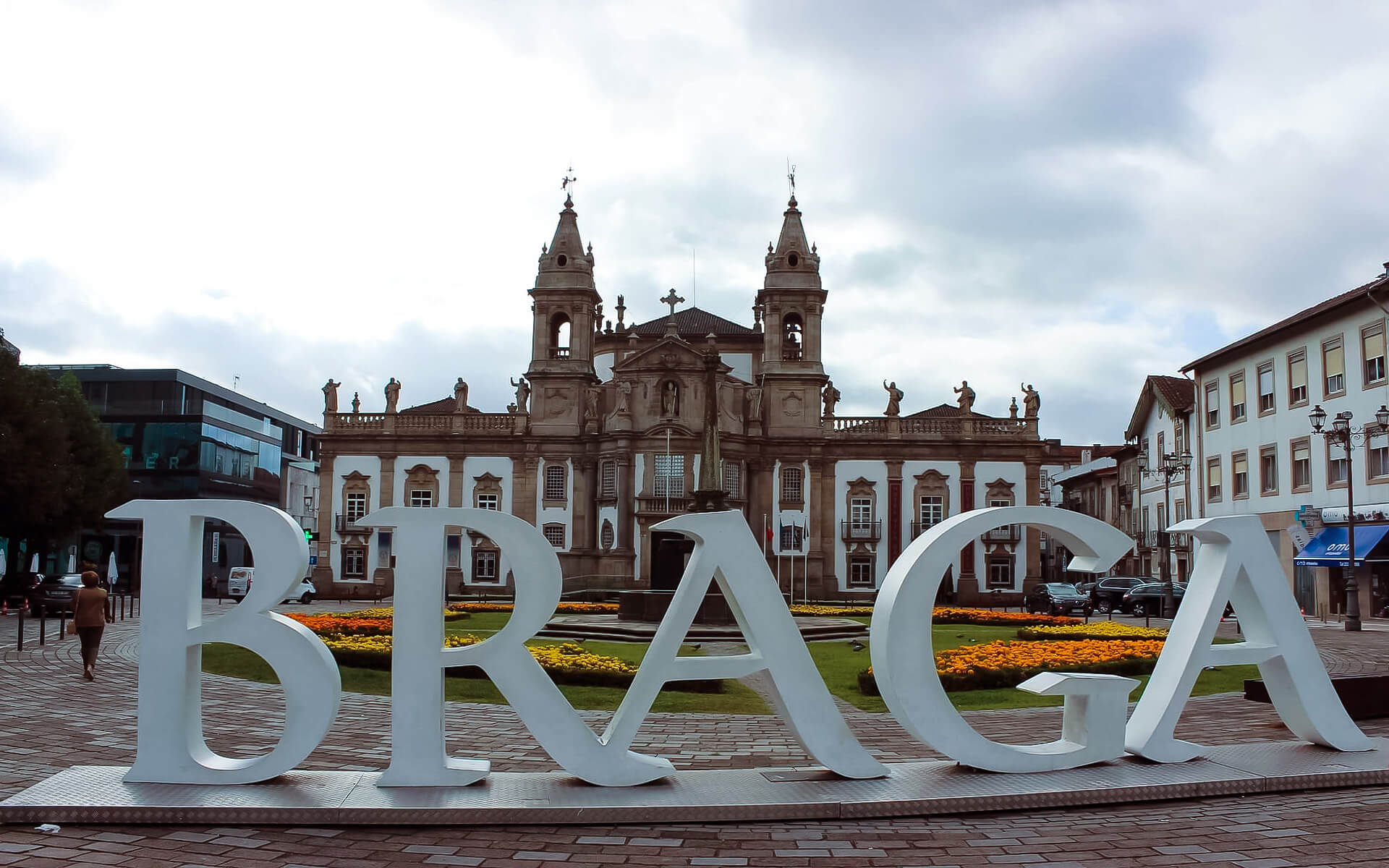Braga is situated in the center of Minho, in a transitional zone between east and west: amid mountains, woods, vast valleys, plains, and farmland, producing natural landscapes shaped by human action. Geographically, it is bounded in the north by the municipalities of Vila Verde and Amares, in the northeast and east by Póvoa de Lanhoso, in the south and southeast by Guimares and Vila Nova de Famalico, and in the west by the municipality of Barcelos.
The municipality’s terrain is characterized by uneven valleys mixed with hilly regions and supplied by rivers that flow parallel to the main rivers. The Cávado River limits it in the north, the Serra dos Picos in the south to a height of 566 metres (1,857 ft), and the Serra dos Carvalhos in the east to a height of 479 metres (1,572 ft), opening to the municipalities of Vila Nova de Famalico and Barcelos. The land stretches from northeast to southwest, following the basins of the two rivers, which are supplied by many tributaries, generating tiny platforms ranging in size from 20 metres (66 ft) to 570 metres (1,870 ft).
The municipality is situated between 20 meters (66 feet) and 572 meters (1,877 feet), with the urbanized center at around 215 meters (705 ft). The topography is semi-planar in the north, where the municipality is designated by the Cavado, and hilly in the east, thanks to the Serra do Carvalho (479 metres (1,572 ft), Serra dos Picos (566 metres (1,857 ft), Monte do Sameiro (572 metres (1,877 ft), and Monte de Santa Marta (562 metres) (1,844 ft). The River Este flows between the Serra do Carvalho and the Serra dos Picos, creating the Vale d’Este valley. Similarly, the plateau of Sobreposta-Pedralva stands between the Serra dos Picos and the Monte do Sameiro. The topography to the south and west is a combination of mountains, plateaus, and medium-sized valleys, allowing the River Este to pass and giving rise to additional confluences such as the River Veiga, River Labriosca, and different ravines.


